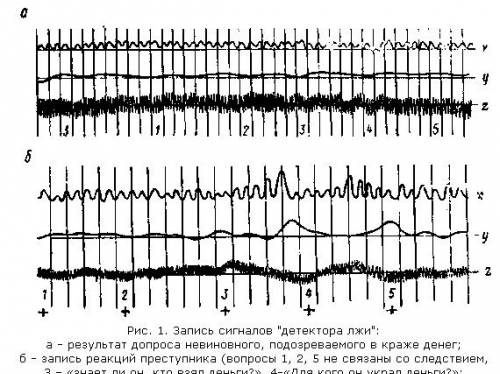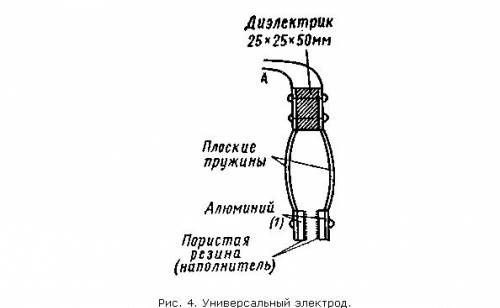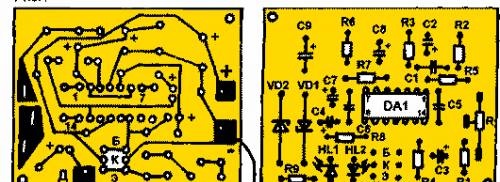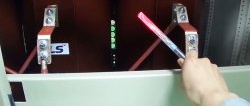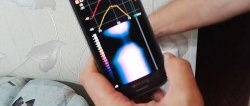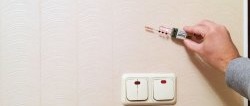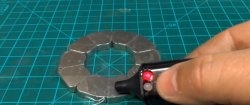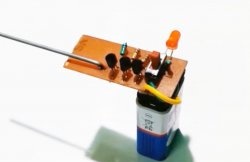Investigative practice shows that lies and denial of guilt by criminals during interrogation are associated with various physiological phenomena. First of all, this is an increase in blood pressure, a change in skin moisture, as well as uncontrolled swallowing of saliva, a feeling of dryness in the mouth, and deep sighs. These phenomena were used by physiologists and psychologists to develop the polygraph or "lie detector". The first experiments in this direction were started in the 90s of the last century, modern electronic devices make it possible to correctly evaluate answers in 85 or more cases out of a hundred.
The "lie detector" consists of a set of sensitive measuring instruments connected to the following sensors: an elastic bracelet, fixed above the elbow, giving pressure on the movable Ente recording of changes in pulse and pressure, systems placed at chest level, for transmitting and recording breathing rhythm and electronic device for measuring and recording changes in skin resistance, the electrodes of which, in the form of bracelets, are attached to the hands of the person being examined. The speed of movement of the paper tape during recording is 160 mm per minute.
The research is based on a series of questions to which answers should be given like “yes” - “no” (indicated on the graph by + or -).First, questions are asked on extraneous topics in order to determine the normal reaction of the “innocent” - then questions related to the progress of the investigation, and at the same time the deviation of the odds is observed we write a curve from the norm. This is shown in Fig. 1.
An additional check of the nature of the reactions of a given person is the experience with playing cards. The student is shown 10 different cards and asked to remember one of them, and then, after shuffling them, they lay them out one after another. Those being interrogated must answer “no” every time, i.e. once he lies. This will be registered on the recording and will serve for the correct decryption of further recordings. This is basically what the work of a lie detector looks like, which in many cases makes it possible to identify the main culprit, accomplices and those who knew about the crime. However, the results of deciphering the lie detector records alone cannot serve as evidence of the guilt of the accused before the court. However, in the US, lie detectors are used by 19 large government agencies (including the army, police and FBI), which back in 1964. had 512 similar devices. Over the course of a year, up to 20,000 people are examined using lie detectors. Many such devices are also used in private companies, for example in banks. The integrity of bank staff is regularly checked using lie detectors. The company that manufactures lie detectors will organize a six-month training course for personnel servicing the detectors. It includes psychology, law and other subjects.
A simplified lie detector (Fig. 2) has such a high sensitivity that even in case of slight excitement of the person being examined or in the case of a deliberate lie, the device arrow deflects I. Here are the approximate readings of the device (in microamps) in response to expressions that excite emotions and are indifferent: kisses - 73, love - 59, marriage - 58; carrot - 18, flower - 16, pencil - 15.Designations: A - to the electrodes, B - to the recording device, etc.
Two electrodes (Fig. 3), which look like closed loops of wire without insulation, are attached to the hand or wrist. In the first case, greater sensitivity is provided, but at the same time there may be interference caused by hand movements. If this is the case, then the electrodes should be secured to the wrist. If the sensitivity is insufficient, connect two or three loops in parallel. The loops are attached to the skin with rubber or rubber tapes or simply bandages. Electrodes can also be attached to the foot.
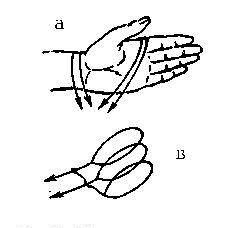
Skin resistance, which under normal conditions can be 3...100 kOhm, changes by 5% under the influence of excitation. The device provides information about this 1.7...2.4 s after exposure to a light, sound or pain signal.
The sensitivity of the device (Fig. 2) is controlled by variable resistor R1. In addition to the galvanometer, you can connect a recorder to the output terminals. You can also add an operational amplifier with a relay or actuator, or connect the entire device to the input of the radio telemetry system. Resistors R serve only to protect transistors from overload and in the event of a short circuit at the system input or when the power supply is turned on.
The device can also find other applications, for example, in technology when studying processes with an ohmic sensor in the frequency range from thousandths of a hertz to tens of kilohertz.
You can carry out fun experiments with the device (measuring temperament, sensitivity, love). The fingers of the partner are strengthened by spring metal clips. At the moment of the kiss, the needle of the device deviates, touching another person under test will give a different result.
Before experimenting with the device as a lie detector, you should set the zero. Both clamps should already be secured. It is advisable to have a device with a double-sided scale.
Lie detector. 2
This multifunctional device (Fig. 1) is based on an infra-low frequency amplifier with a bandwidth of 0.1...2 Hz and a voltage gain of 400...1200. Depending on the type of sensor and output device, the device can be used for many purposes when recording ultra-low frequency processes. Of particular interest is its use as a so-called “lie detector”.
As is known, mental activity is closely related to various physiological processes. When a person is nervous, the amplitude and frequency of the heartbeat and breathing, blood pressure, salivation, and so on change. The skin resistance changes especially noticeably - 1...2 s after an exciting question, memory, pain, light, sound exposure, the skin resistance changes by several percent. The device reliably records this change in resistance even when using the simplest sensors (two contact plates placed on the fingers of one hand). A special feature of the device is its weak response to interference caused by finger movements.

Having attached the sensors to the tips of any two fingers of one hand and turned on the device, you need to wait 5...10 s until the transition process ends and both LED will go out. The subject should sit comfortably, placing his hand motionless and relaxed. It is very important for success that the hand with the sensors be warm.
After each question asked to the subject, you need to pause for 2...3 s until the indicator goes out completely.If the indicator flashes due to any questions, you need to reduce the sensitivity with the regulator or just calm down a little. As a training exercise, you can ask the subject to memorize one of several playing cards, and then, after shuffling them, show them to him one at a time, asking if this is the card intended. The subject must answer “no” in all cases. In one case, the device must record a lie.
Another option is that various words, names of acquaintances, and the like are slowly pronounced, and the subject silently reacts to some words more strongly, which is also recorded. In this way, you can find out the likes and dislikes of the subject.
It should be remembered that the reliability of detection is not one hundred percent, novice subjects are very worried, and experienced ones can, at the right moment, by an effort of will cause excitement and distort the result. The reliability of lie detection is higher if the subject does not see the indicator.
The device is assembled on a single-sided printed circuit board (Fig. 3). You can use a small soap dish as a body. Food - from "Krona" or "Corundum". Capacitors C1, C5, C6 - any ceramic, the rest - type K50-6. Resistor R - type SPZ-1B or, with some modification of the board, any small-sized one. Transistor VT1 is any pnp (KTZ15, KTZ12, MP37), and VT2 is any pnp (KT361, KT209, MP42). LEDs HL1, HL2 - type AL307, AL102, etc. Assembled from serviceable parts, the device does not require adjustment.
